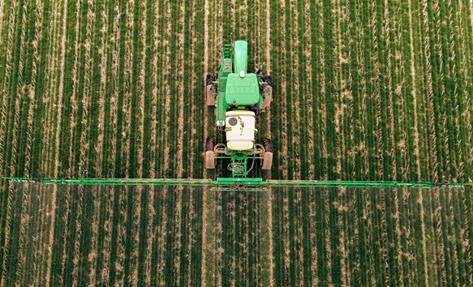While archetypal droughts may develop over seasons, flash droughts are marked by rapid drying. They can take hold within weeks and are tough to predict. In a recent study, a team led by scientists from NASA’s Jet Propulsion Laboratory in Southern California was able to detect signs of flash droughts up to three months before onset. In the future, such advance notice could aid mitigation efforts.

A Signal Seen From Space
During photosynthesis, when a plant absorbs sunlight to convert carbon dioxide and water into food, its chlorophyll will “leak” some unused photons. This faint glow is called solar-induced fluorescence, or SIF. The stronger the fluorescence, the more carbon dioxide a plant is taking from the atmosphere to power its growth.
While the glow is invisible to the naked eye, it can be detected by instruments aboard satellites such as NASA’s Orbiting Carbon Obsevatory-2 (OCO-2). Launched in 2014, OCO-2 has observed the U.S. Midwest aglow during the growing season.
The researchers compared years of fluorescence data to an inventory of flash droughts that struck the U.S. between May and July from 2015 to 2020. They found a domino effect: In the weeks and months leading up to a flash drought, vegetation initially thrived as conditions turned warm and dry. The flourishing plants emitted an unusually strong fluorescence signal for the time of year.
But by gradually drawing down the water supply in the soil, the plants created a risk. When extreme temperatures hit, the already low moisture levels plummeted, and flash drought developed within days.
The scientists found that the unusual fluorescence pattern correlated extremely well with soil moisture losses in the six to 12 weeks before a flash drought. A consistent pattern emerged across diverse landscapes, from the temperate forests of the Eastern U.S. to the Great Plains and Western shrublands.
For this reason, plant fluorescence “shows promise as a reliable early warning indicator of flash drought with enough lead time to take action,” said Nicholas Parazoo, an Earth scientist at JPL and lead author of the recent study.
While early warning can’t eliminate the impacts of flash droughts, Gerth said, “farmers and ranchers with advanced operations can better use water for irrigation to reduce crop impacts, avoid planting crops that are likely to fail, or plant a different type of crop to achieve the most ideal yield if they have weeks to months of lead time.”
Tracking Carbon Emissions
In addition to trying to predict flash droughts, the scientists wanted to understand how these impact carbon emissions. By converting carbon dioxide into food during photosynthesis, plants and trees are carbon “sinks,” absorbing more CO2 from the atmosphere than they release. Many kinds of ecosystems, including farmlands, play a role in the carbon cycle — the constant exchange of carbon atoms between the land, atmosphere, and ocean.
The scientists used carbon dioxide measurements from the OCO-2 satellite, along with advanced computer models, to track carbon uptake by vegetation before and after flash droughts. Heat-stressed plants absorb less CO2 from the atmosphere, so the researchers expected to find more free carbon. What they found instead was a balancing act.
Warm temperatures prior to the onset of flash drought tempted plants to increase their carbon uptake compared to normal conditions. This anomalous uptake was, on average, sufficient to fully offset decreases in carbon uptake due to the hot conditions that ensued. The surprising finding could help improve carbon cycle model predictions.
Source:
NASA
Provided by the IKCEST Disaster Risk Reduction Knowledge Service System
Comment list ( 0 )
